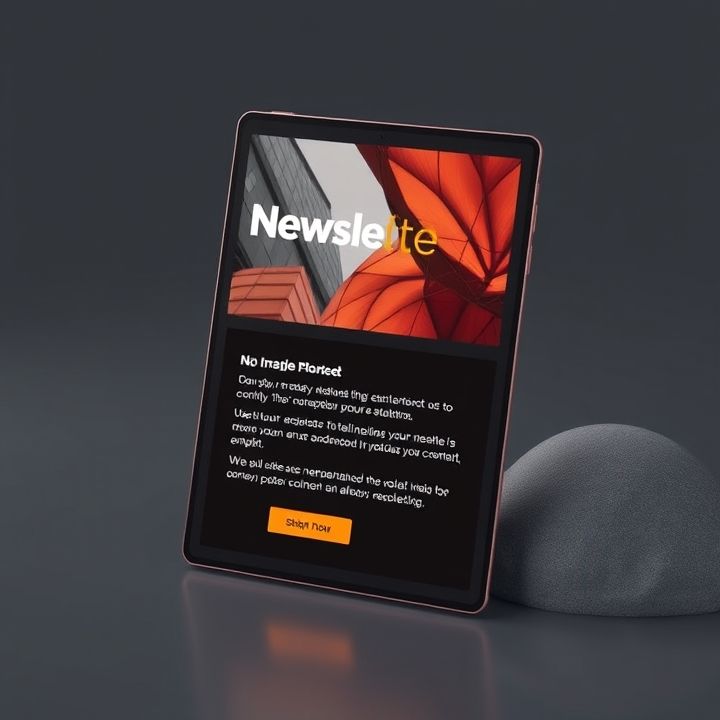Table of Contents
- Introduction
- Understanding User Behavior and Preferences
- Collecting Data to Inform Segmentation
- Segmenting Based on Purchase History
- Using Engagement Levels to Tailor Segments
- Leveraging Geographic and Demographic Data
- Creating Dynamic Segments for Personalized Content
- Testing and Refining Segmentation Strategies
- Automating Segmentation for Efficiency
- Conclusion
- Frequently Asked Questions
Introduction
In the ever-evolving world of digital marketing, email remains a formidable force. Yet, in a sea of inbox clutter, the key to standing out is no longer just about crafting compelling subject lines or eye-catching designs. Enter the magic of segmentation based on user behavior—the secret sauce to unlocking unprecedented email engagement.
Imagine tailoring your emails not just by basic demographics, but by a thorough understanding of what your audience is actively doing, clicking, and searching for. This level of personalization transforms your campaigns from mere messages to conversations, deeply resonating with your audience’s current needs and interests.
Let’s delve deeper into the art of behavior-based segmentation, revolutionizing the way companies communicate. Before we dive into the strategies, techniques, and actionable insights, consider this brief comparison table that highlights the stark difference between traditional segmentation methods and behavior-based segmentation:
| Traditional Segmentation | Behavior-Based Segmentation |
|---|---|
| Age, Gender, Location | Click History, Purchase Behavior, Browsing Patterns |
| One-size-fits-all | Personalized Interactions |
Intrigued? Let’s uncover how you can master this transformative approach and lead your email marketing efforts to new heights.
Understanding User Behavior and Preferences
Understanding user behavior and preferences is crucial for effective email list segmentation. To begin, businesses should gather data on how users interact with their emails. This includes metrics such as open rates, click-through rates, and time spent on specific email content. Analyzing this data helps in identifying patterns and trends in user engagement.
In addition to email interaction data, other sources such as website analytics provide valuable insights. Monitoring which pages users visit, the duration of their visits, and the actions they take can reveal their interests and preferences.
Surveys and feedback forms are another effective method to directly gather user preferences. By asking specific questions about content interests and communication frequency, businesses can tailor their messaging accordingly.
Social media behavior also offers valuable information, such as engagement levels and interactions with posts, which can be integrated into the segmentation criteria.
Once sufficient data is accumulated, businesses can segment their email list into distinct groups based on behavioral similarities and preferences. This ensures that each group receives highly relevant and personalized content, enhancing the user experience and boosting engagement rates.
Collecting Data to Inform Segmentation
To effectively segment your email list based on user behavior and preferences, the first step is collecting accurate and relevant data. This foundational data serves as the backbone for your segmentation strategy, enabling more targeted and personalized communication with your audience. Start by leveraging analytics tools to gather insights on user interactions with your website, such as page views, click-through rates, and purchase history. This information provides a solid understanding of user behavior patterns, allowing you to group users by similar characteristics.
Additionally, consider implementing surveys and preference centers where subscribers can indicate their interests and preferences directly. This approach can furnish invaluable firsthand information, increasing the precision of your segments. Use these insights to tailor your content and offerings to match their expectations, thereby enhancing engagement and boosting conversion rates.
Furthermore, integrating CRM platforms and email marketing software can streamline data collection, making it easier to filter users into different segments. These tools often offer segmentation features that automate the process based on behavior or interest metrics, ensuring your communication strategies remain relevant and precise. Collecting and analyzing data methodically lays the groundwork for a dynamic and successful email marketing strategy.
Segmenting Based on Purchase History
Segmenting your email list based on purchase history is a powerful strategy to enhance personalization and boost engagement. By analyzing the buying patterns of your customers, you can create tailored campaigns that resonate more with their interests and needs. Start by categorizing your customers into segments such as frequent buyers, one-time purchasers, or dormant customers. Each group has different needs and can be targeted with specific messaging. For instance, frequent buyers might appreciate loyalty rewards, while one-time purchasers could be enticed with special offers to encourage repeat purchases.
Another way to segment is by analyzing the types of products purchased. For example, if a customer frequently buys athletic wear, they might be interested in early notifications about new arrivals in that category. Additionally, understanding the timing of purchases can allow you to target seasonal buyers effectively. Utilize this data to send timely recommendations and promotions. With a well-segmented list, you ensure that your communications are relevant, increasing the likelihood of conversion and customer retention. By leveraging purchase history, you not only improve the customer experience but also drive more effective marketing outcomes.
Using Engagement Levels to Tailor Segments
Segmenting your email list based on engagement levels is an effective strategy to ensure your messages resonate with your audience. By observing user interactions such as open rates, click-through rates, and response times, you can categorize subscribers into different groups based on their activity. For instance, you might create segments for highly engaged users, moderately engaged users, and inactive users. This allows you to tailor your messaging to each group’s specific needs and preferences.
For highly engaged subscribers, you can deliver content that encourages further interaction, such as exclusive offers or invitations to events. Moderately engaged users might benefit from re-engagement campaigns that highlight the value of your offerings or remind them of what they might be missing out on. For those who are less active, consider sending targeted messages aimed at reigniting their interest or seeking feedback on how your content may better serve their needs.
Utilizing these segments not only increases the relevance of your emails but also enhances overall campaign effectiveness. By aligning your content strategy with user engagement, you can foster stronger relationships with your audience and optimize conversion opportunities.
Leveraging Geographic and Demographic Data
One of the most effective ways to segment your email list is by leveraging geographic and demographic data. These two powerful tools enable marketers to create highly targeted campaigns that resonate with their audience on a more personal level. By understanding where your subscribers are located, you can tailor your messages to account for local events, weather, and even holidays, making your communication more relevant. For instance, a clothing retailer may promote winter apparel in colder regions, while showcasing summer outfits in warmer climates.
Demographic data further refines segmentation by considering attributes such as age, gender, income level, and occupation. These factors allow businesses to customize their content to meet the specific needs and interests of different subscriber groups. For example, a financial services company might offer retirement planning resources to older subscribers while providing student loan advice to a younger audience just entering the workforce. Combining geographic and demographic data enables marketers to deliver personalized, compelling messages that can significantly enhance engagement and conversion rates.
In conclusion, utilizing geographic and demographic data in your segmentation strategy not only helps in crafting more effective marketing messages but also fosters a deeper connection with your audience, ultimately driving better results for your campaigns.
Creating Dynamic Segments for Personalized Content
Creating dynamic segments for personalized content is a powerful strategy for enhancing the relevance of your email marketing campaigns. By leveraging user behavior and preferences, marketers can tailor their messages to fit the unique interests and needs of each subscriber. This approach involves using data analytics to track actions such as email open rates, click-through rates, purchase history, and website interactions.
For instance, if a subscriber frequently engages with content related to a specific product category, they can be segmented into a group that receives targeted promotions and updates for that category. Additionally, integrating demographic information and past purchasing behavior can further refine these segments, ensuring that the content aligns not only with the subscriber’s current interests but also with their potential needs.
The key to successful dynamic segmentation lies in continuous monitoring and updating of these segments as user behavior evolves. Utilizing automation tools can greatly assist in this process, allowing marketers to maintain up-to-date segments without manual intervention. Moreover, personalized content can significantly boost engagement rates, as users are more likely to interact with emails that directly address their interests and preferences. In summary, dynamic segmentation is an essential component for delivering a more personalized and effective email marketing strategy.
Testing and Refining Segmentation Strategies
Testing and refining segmentation strategies are crucial to maximizing the effectiveness of your email marketing campaigns. It begins with setting clear goals for what you wish to achieve through segmentation, such as improving open rates, increasing engagement, or boosting conversions. A/B testing can prove invaluable in this context, allowing you to test different segmentation variables such as user demographics, browsing habits, or purchase history. By comparing open and click-through rates across different segments, you can identify which strategies yield the best results.
Furthermore, analyzing user feedback and behavior is key to refining your segmentation process. For instance, tracking how different segments respond to various email content or measuring engagement levels can provide insight into what works best for different groups. It’s important to be adaptable; user preferences and behaviors can change over time. Therefore, regularly updating your segments based on the latest data will help maintain their relevance and effectiveness. Continuous improvement through testing and data-driven adjustments will help in tailoring your messaging to the right audience, leading to more successful email marketing strategies.
Automating Segmentation for Efficiency
Automating segmentation in email marketing can significantly enhance your campaign’s efficiency by dynamically categorizing subscribers based on their behavior and preferences. This process begins with selecting a comprehensive email marketing platform equipped with automation features. Once these tools are in place, you can set criteria for segmentation, such as past purchase behavior, engagement rates, and demographic data. For example, automations can tag users who frequently open your emails or those who have made recent purchases, placing them into targeted segments for future campaigns.
Automation not only saves time but also ensures that your audience receives content that resonates with them, thereby increasing engagement. A robust system can adjust these segments in real time, based on behavior changes, allowing for a more personalized approach. For instance, if a user has consistently clicked through on a particular type of content, automation can ensure they receive more of the same, enhancing their user experience and boosting conversion rates. With automated segmentation, marketers can achieve a high level of precision in targeting, leading to more effective communication and better business results.
Conclusion
In conclusion, mastering the art of segmentation based on user behavior is a transformative strategy in email marketing. By meticulously collecting and analyzing data from various sources such as purchase history, engagement levels, geographic, and demographic insights, marketers can craft highly personalized and relevant email content. This tailored approach not only boosts engagement rates but also fosters stronger customer relationships and enhances conversion opportunities. Dynamic segmentation, empowered by automation, ensures that your communication remains precise and efficient, adapting to changes in user preferences over time. Testing and refining your segmentation strategies further bolster their effectiveness, allowing for continuous improvement and alignment with your marketing objectives. Embracing these practices equips businesses to unlock the secret to skyrocketing email engagement, setting the stage for successful campaigns and sustained business growth.

